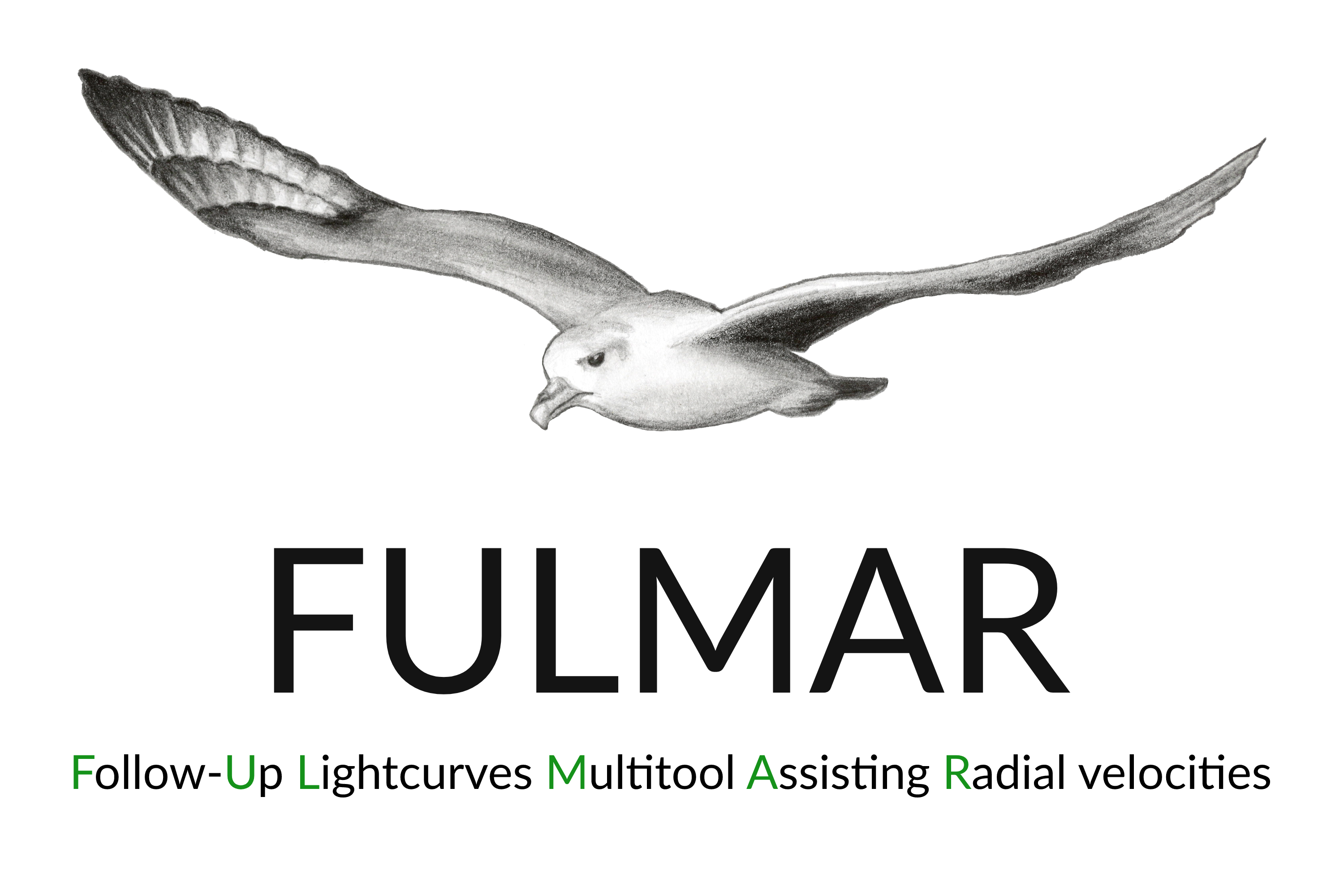FULMAR is an open source Python package that was created to assist radial velocity follow-up programs by making the analysis of the light curves easier. It provides tools to download lightcurves, correct stellar activity, to look for transits, to refine transit parameters, to estimate the amplitude of the corresponding RV signal, and to visually probe signals detected in RV. Our tool aims at selecting suitable RV follow-up targets more effectively and making their analysis easier. It was build in a modular way, making new features easier to implement.
FULMAR can be installed using: pip install fulmar-astro
If you have multiple versions of Python and pip on your machine, try: pip3 install fulmar-astro
The latest version can be pulled from github::
git clone https://github.com/astrojose9/fulmar.git
cd fulmar
python setup.py install
If the command python does not point to Python 3 on your machine, you can try to replace the last line with python3 setup.py install. If you don't have git on your machine, you can find installation instructions here.
Dependencies: Python 3, Arviz, Astropy, celerite2 corner, exoplanet, Lightkurve, Matplotlib, NumPy, pymc3-ext, TransitLeastSquares
If you have trouble installing, please open an issue.
The documentation is hosted on ReadTheDocs.
We welcome and encourage contributions. If you have any trouble, open an issue.
If you used FULMAR for your research, please reference it using the following BibTeX entry: ... @software{FULMAR, author = {José {Rodrigues} and Susana C. C. {Barros} and Nuno C. {Santos} and Olivier {Demangeon}}, title = {astrojose9/fulmar: v0.1.9}, month = may, year = 2022, note = {{Documentation on https://fulmar-astro.readthedocs.io/}}, publisher = {Zenodo}, version = {v0.1.9}, doi = {10.5281/zenodo.6602707}, url = {https://doi.org/10.5281/zenodo.6602707} } ...
FULMAR is distributed under MIT License.
Copyright 2021, José Rodrigues.




